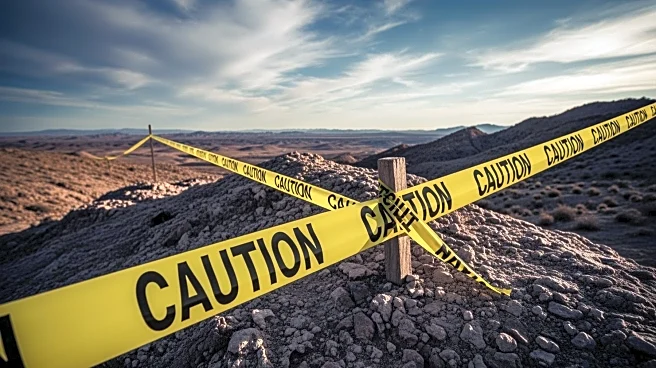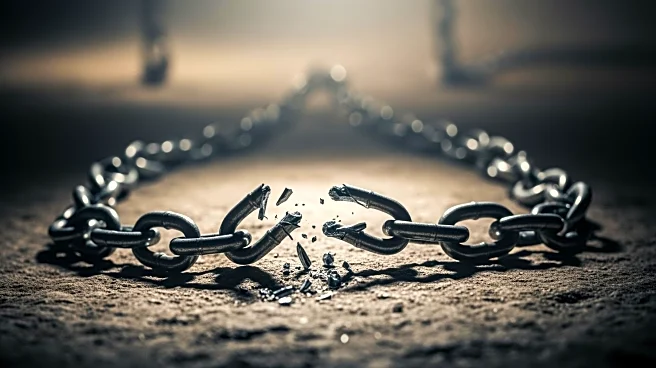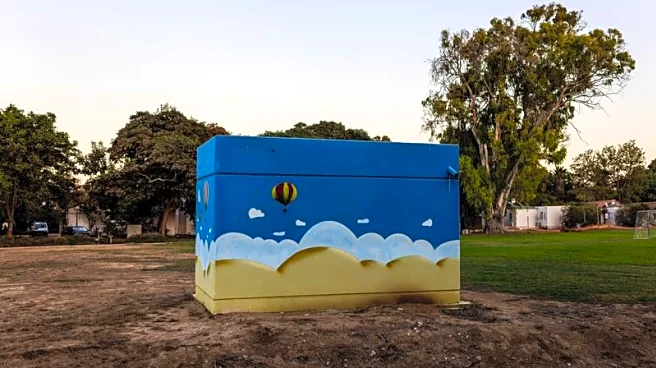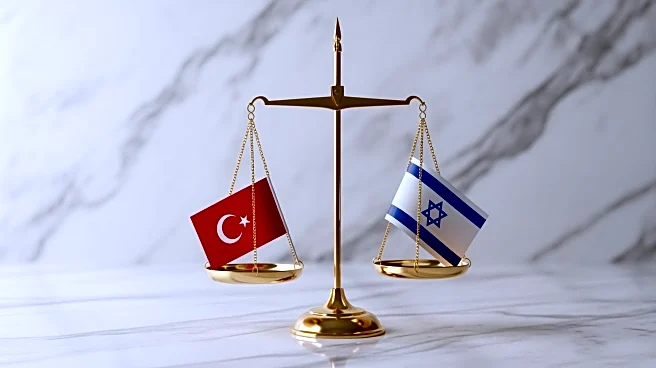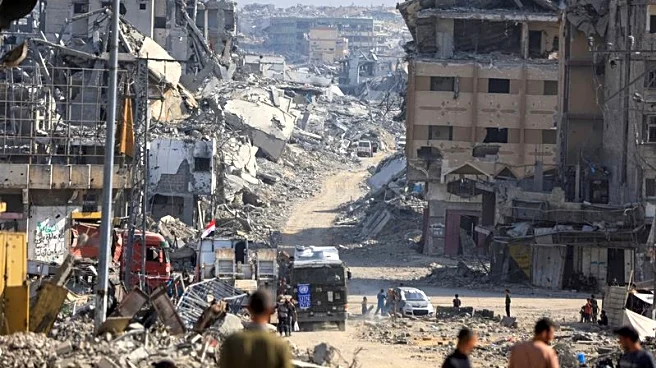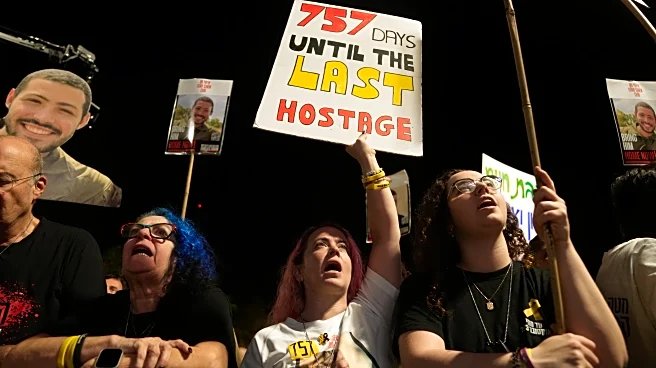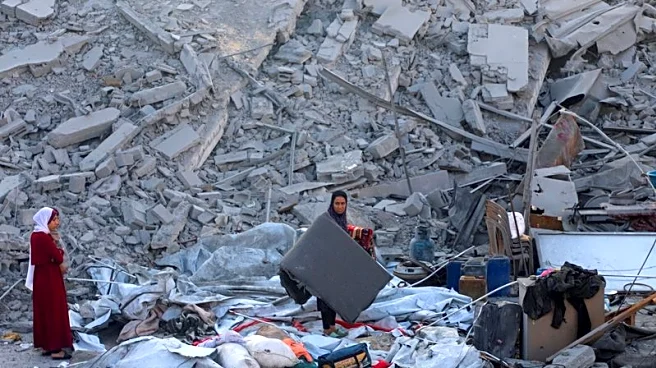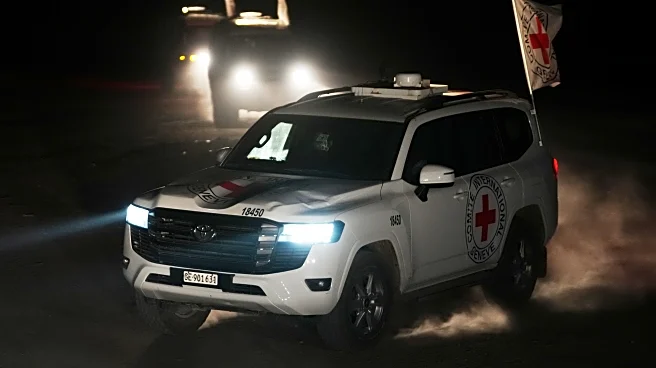What's Happening?
The implementation of President Trump's 20-point ceasefire plan in Gaza has led to the establishment of a 'yellow line' by Israeli forces, marking the boundary of their control in the region. This line,
made of yellow concrete blocks, signifies the areas still under Israeli military presence, which currently covers more than 50% of the Gaza Strip. The ceasefire agreement, which aims for a complete staged withdrawal of Israeli forces, has faced challenges, including incidents of violence and the failure of Hamas to meet certain conditions. The situation remains tense, with Palestinians expressing concerns over displacement and the future of their homes.
Why It's Important?
The 'yellow line' serves as a physical and symbolic representation of the ongoing conflict and the fragile nature of the ceasefire. It highlights the complexities involved in achieving a lasting peace in the region, with both Israeli and Palestinian communities facing uncertainty. The situation underscores the challenges in implementing international agreements and the potential for further conflict if conditions are not met. The presence of Israeli forces and the lack of progress in the ceasefire plan could lead to prolonged instability, affecting the lives of civilians and the broader geopolitical landscape.
What's Next?
The future of the ceasefire plan depends on the compliance of both parties with the agreed terms. The introduction of an International Stabilization Force is a potential next step, contingent on international support and funding. The situation requires careful monitoring, as any escalation could derail the peace process. The international community's role in facilitating dialogue and ensuring adherence to the ceasefire terms will be crucial in determining the outcome of this conflict.
